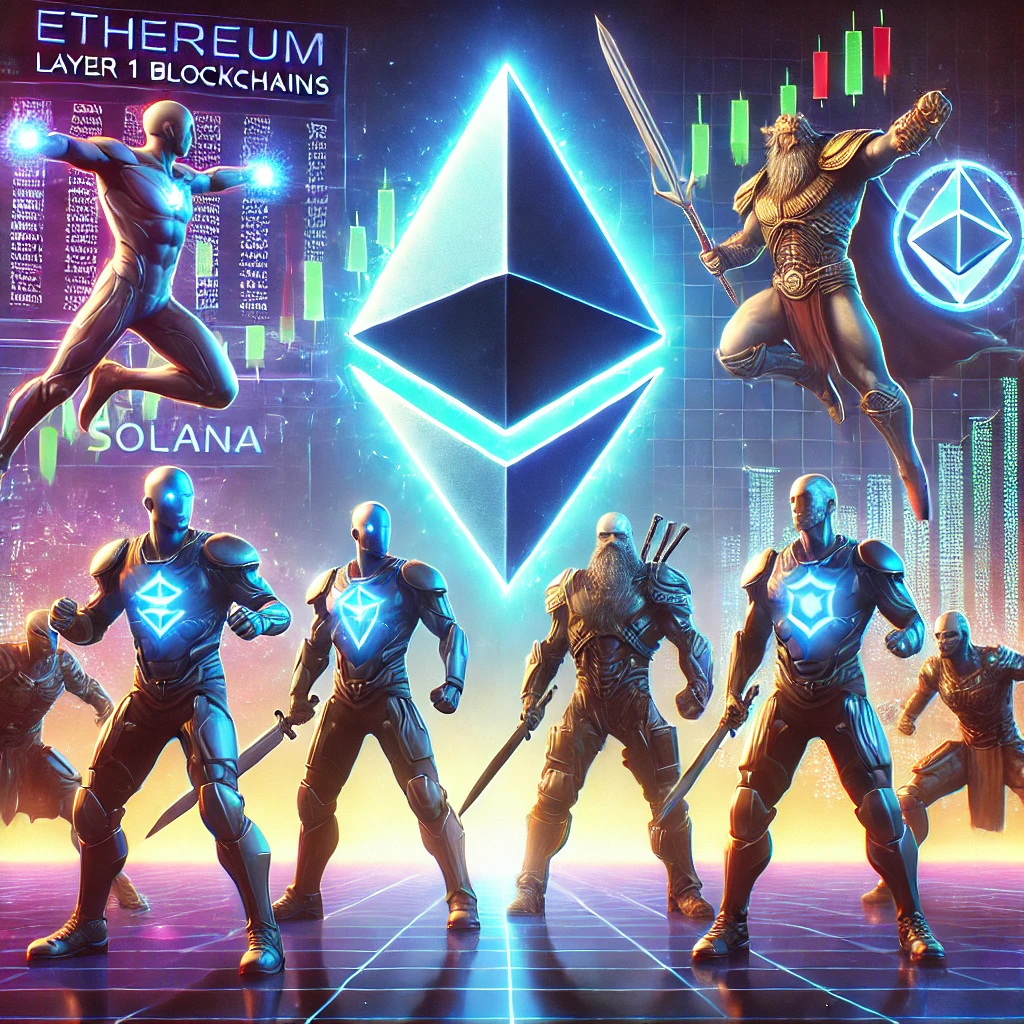Key Takeaways:
- Ethereum remains the leading Layer 1 blockchain, but faces increasing competition from innovative platforms.
- New entrants like Qubetics, Sui, and Aptos offer unique features aiming to address scalability, security, and interoperability challenges.
- The ultimate “king” of Layer 1 blockchains will be determined by technological advancements, developer adoption, and real-world use cases.
As of February 20, 2025, the blockchain ecosystem is witnessing a fierce competition among Layer 1 protocols, each striving to establish itself as the foundational platform for decentralized applications (dApps) and smart contracts. While Ethereum (ETH) continues to lead with its extensive developer community and established infrastructure, emerging contenders are introducing innovative solutions to address the limitations inherent in existing systems.
Ethereum: The Established Leader
Ethereum’s transition to a proof-of-stake (PoS) consensus mechanism in 2022 significantly reduced its energy consumption by over 99.9%, addressing environmental concerns associated with blockchain technologies.
fnlondon.com This shift has bolstered Ethereum’s position as a sustainable and scalable platform. However, challenges such as high gas fees and network congestion persist, prompting the exploration of alternative Layer 1 solutions.
Emerging Contenders
- Qubetics ($TICS): Currently in its 21st presale stage, Qubetics has raised over $12.6 million, attracting more than 19,700 holders. The platform aims to tackle interoperability issues, enabling seamless transactions across different blockchain networks. Its multi-chain wallet and focus on real-world asset tokenization position it as a promising contender in the Layer 1 landscape. thecryptoupdates.com
- Sui (SUI): Launched by former Meta employees, Sui focuses on high performance and developer accessibility. Its architecture enables parallel transaction processing, significantly enhancing throughput. Designed to handle complex dApps without compromising speed or security, Sui is gaining traction, particularly in gaming and social applications. cryptotimes.io
- Aptos (APT): Also founded by ex-Meta employees, Aptos utilizes the Move programming language to offer a scalable and efficient blockchain solution. With approximately $400 million raised from investors like Andreessen Horowitz and Apollo Global Management, Aptos is expanding its ecosystem through strategic partnerships, including collaborations with Microsoft and Google Cloud. en.wikipedia.org
Factors Influencing the Battle for Supremacy
- Scalability and Performance: The ability to process a high volume of transactions per second (TPS) without compromising security is crucial. Platforms like Sui and Aptos are introducing novel architectures to achieve this goal.
- Interoperability: Facilitating seamless interaction between different blockchain networks is essential for widespread adoption. Qubetics’ focus on interoperability addresses this need, potentially positioning it as a key player.
- Developer Adoption: A robust and active developer community drives innovation and the creation of dApps. Ethereum’s extensive developer base provides a significant advantage, but emerging platforms are investing in tools and resources to attract developers.
- Real-World Use Cases: The practical application of blockchain technology in sectors like finance, gaming, and supply chain management will influence the long-term success of Layer 1 platforms.
Conclusion
The contest for the title of “king” of Layer 1 blockchains is intensifying as new entrants bring innovative solutions to the table. While Ethereum maintains a strong lead, platforms like Qubetics, Sui, and Aptos are challenging the status quo with unique features and strategic partnerships. The outcome of this competition will depend on each platform’s ability to address existing challenges, foster developer communities, and demonstrate real-world applicability. As the blockchain landscape continues to evolve, stakeholders should closely monitor these developments to make informed decisions.
